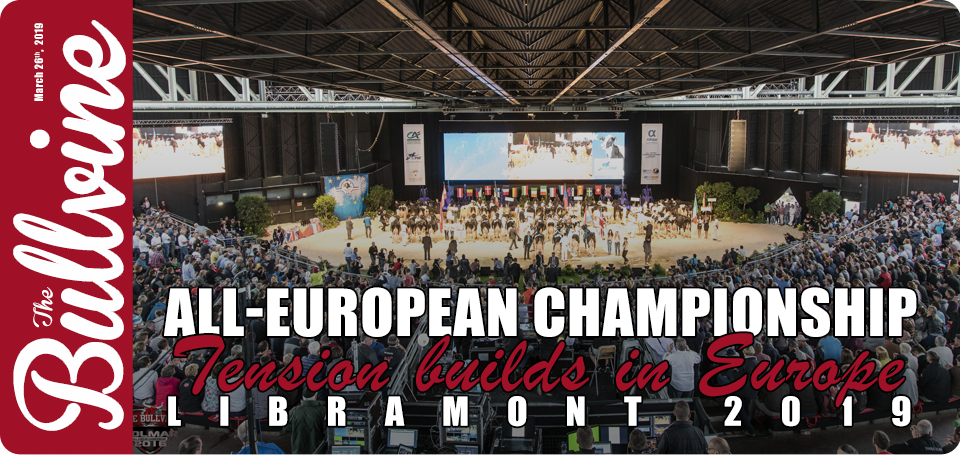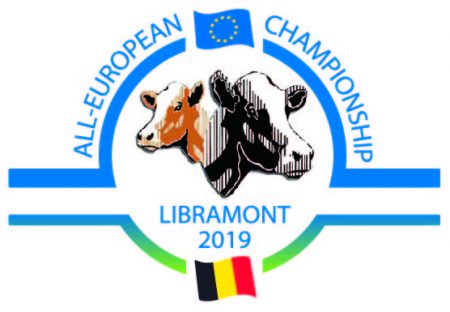
Preparation for this year’s event began way back in 2017, while 67 days out from the event on February 4 this year, quarantine started for the United Kingdom entries of Great Britain and Northern Ireland.
This year’s competition includes teams from Austria, Belgium, Czech Republic (known as Czechia to its inhabitants), Denmark, Finland, France, Germany, Ireland, Italy, Latvia, Luxembourg, The Netherlands, Poland, Portugal, Spain, Slovenia, Sweden, Switzerland and the UKBons-Holsteins Koba 21
It seems incredible to consider the scale of the efforts that are now being mobilised to move animals across so many national borders. Perhaps even more incredible to think it will culminate with them standing beside one another in one ring.
The long trek
Teams are selected by committees within nations. And it is these committee members only who perhaps truly know the work, money and risk involved in putting together a team to travel. All cows must be from herds free of Infectious Bovine Rhinotracheitis (IBR). All have been tested – several times – for Bovine Viral Diarrhea (BVD), Enzootic Bovine Leukosis (EBL), Brucellosis and Tuberculosis (TB).
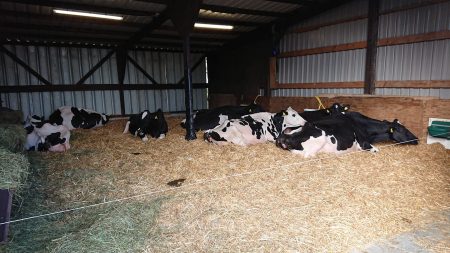
Bons-holsteins has a dream….
After the open european show in Colmar we set a goal to have cows ready for the open European Show in Libramont 2019. 7 cows still selected for Libramont.
To put it into perspective, Belgium is a federal state located in Western Europe. It has 98 kilometres of coastline bordering the North Sea, just north of the English Channel which sits between England and Belgium’s southern neighbour, France. Belgium also conveniently shares borders with four other nations: France (a 556km long border), Germany (13km), Luxembourg (130km) and The Netherlands (478km). And while it’s less than 200km as the crow flies between England and Belgium, the UK teams do have to cross the English Channel to France, before heading on to Belgium to participate. All their entries have had individual passports, which is a legal requirement for all cattle in the UK, for some time.
Brexit (the UK’s decision to leave the European Union) is set to happen on March 29. This timing might further complicate the UK team’s travel plans as it passes through France, on route to its competition destination.
Any one of the challenges listed above would stop many, but for these competitors it simply doubly underlines the passion driving everyone’s campaigns and the excitement that this show creates.
One tour group of 30 supporters from the UK has booked out an entire castle to secure accommodation in the region’s pretty centre, where French, German and Luxembourgish (or Lëtzebuergesch) are all spoken.
2016 Champions
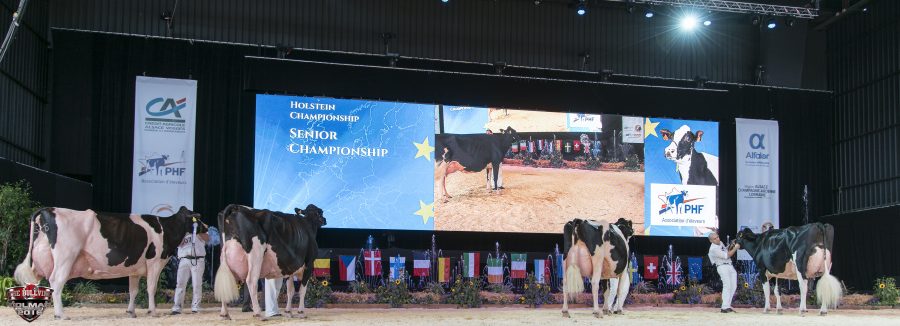
The final pick at the All-European Championship at Colmar, France in 2016 included the power-packed selection of (L-R) Lady Gaga EX97 (Germany), Ashlyn Vray Goldwyn EX96 (Spain), Illens Atwood Australia EX95 (UK) and Galys-Vray EX94-4YRS (Switzerland).
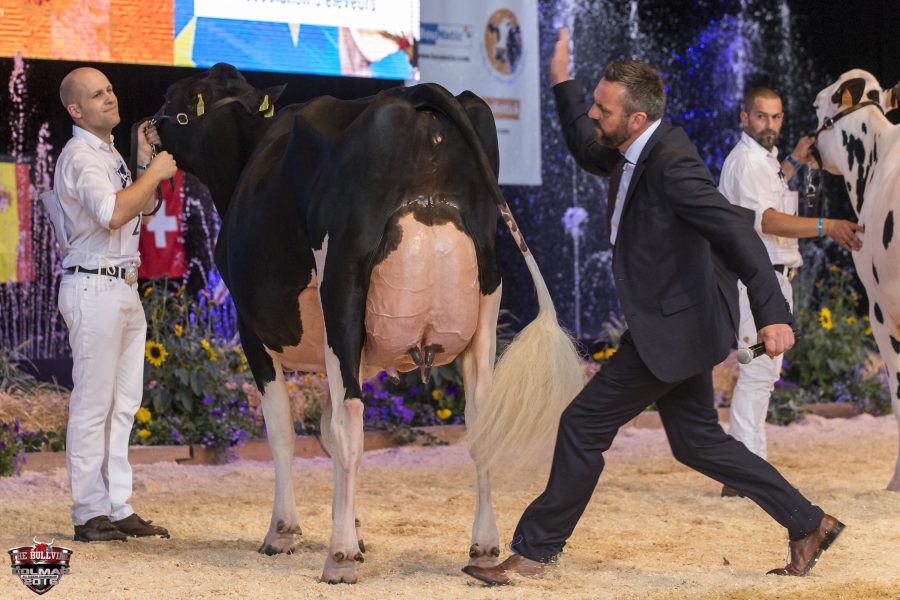
Judge Markus Mock would tap out Galys-Vray.
At the last championship in 2016 at Colmar, France, the Swiss team dominated the big prizes. The Grand Champion Holstein was Swiss sensation Galys-Vray EX94. Sired by Atwood out of a Damion, she was owned by Mattenhof Holstein, Al.Be.Ro, Thomas Staub. Reserve Champion was the Spanish entry of Ashlyn Vray Goldwyn, owned by Ponderosa Holsteins and Al.Be.Ro.
Both Red & White Grand Champions were from Switzerland. Grand was Suard-Red Jordan Irene, owned by Schrago Frères. Reserve was Bopi Talent Lotanie, owned by Pierre Oberson and Nicolas Savary.
Front-runners
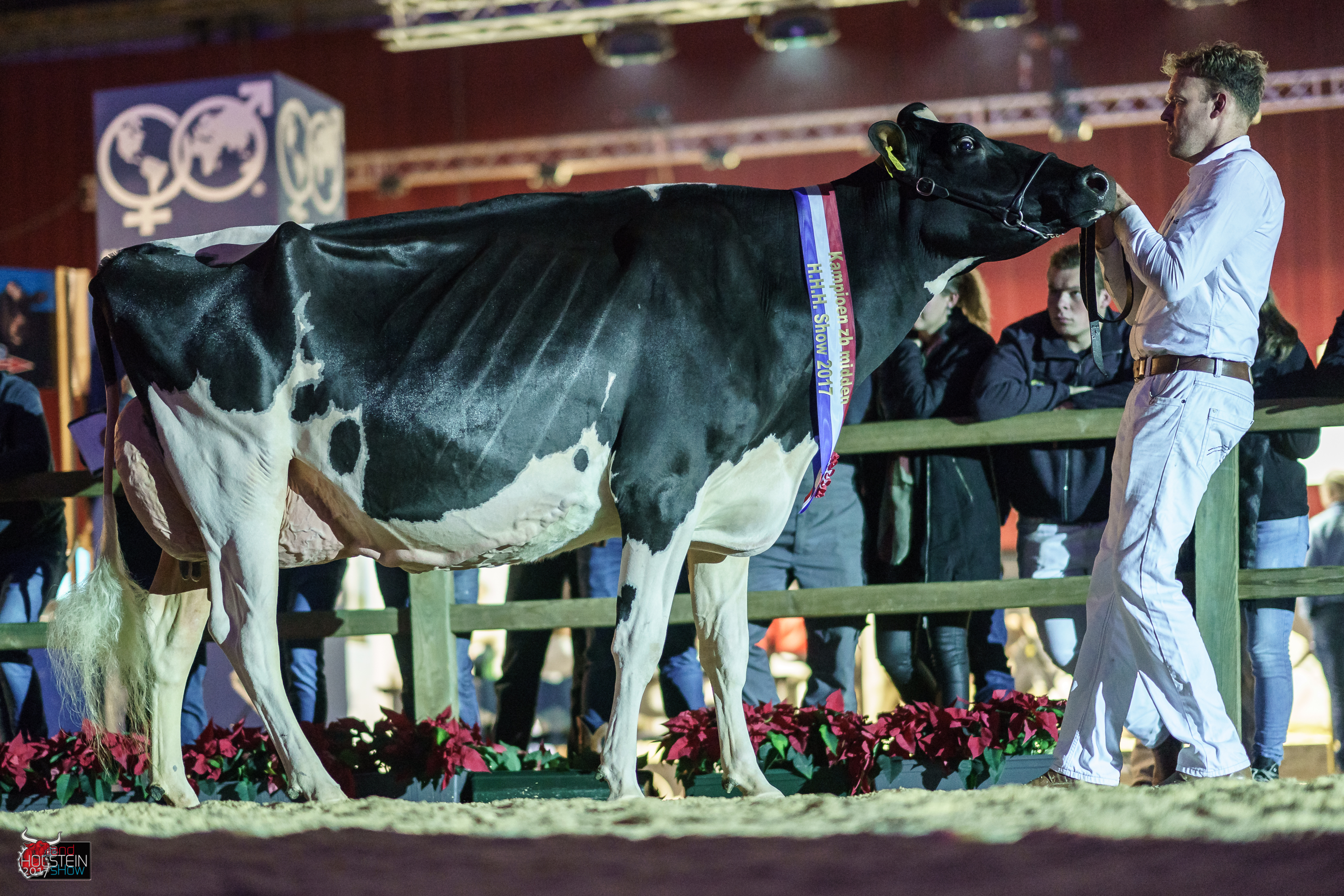
Bons-Holsteins Koba 219 Grand Champion FVZH Wintershow
This year, one of the individual danger cows in the Holsteins will undoubtedly be Dutch entry Bons-Holsteins Koba 219 EX94 Max. Bred and co-owned by Nico and Lianne Bons, a half share of Koba was sold to West Coast Holsteins (Canada) at the Royal Agricultural Winter Fair in November for C$46,000. The L’Authority daughter carries a high profile and plenty of international respect.
Nico Bons knows much has to happen before Koba steps out at Libramont. But he is ready for it.
“This is the show I want to win once in my life,” he said. “We have worked three years already to get the cows ready for this show.”
He said while he has enjoyed many titles, the All-European Show Grand Champion one would be special.
“This competition is only held once every three years; every country sends their best animals, and the atmosphere is second to none.”
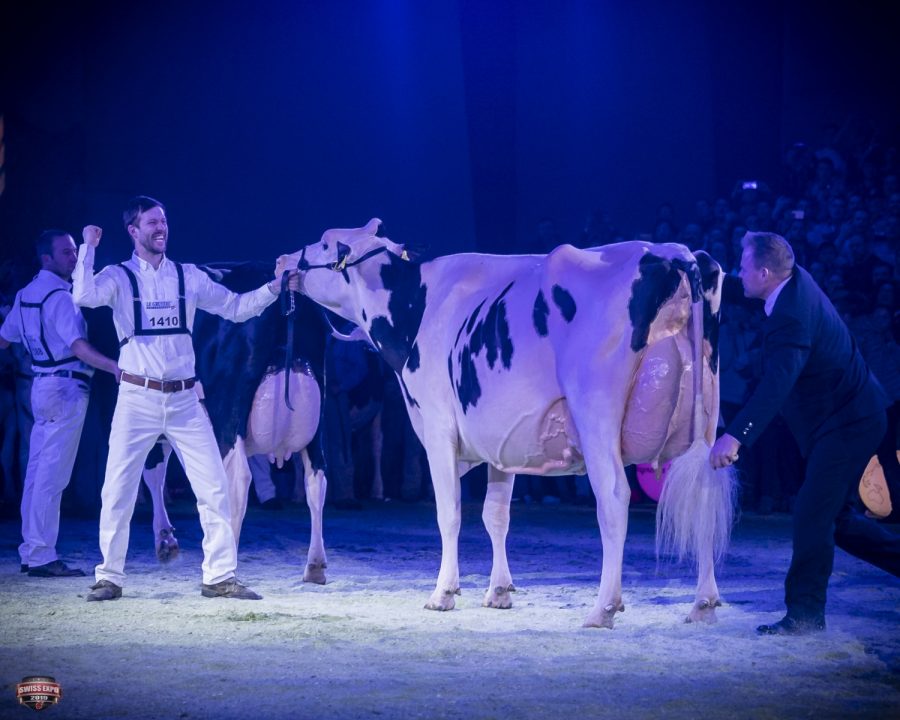
Sunibelle Dempsey Esprit EX94 (pictured winning Supreme Champion at the Swiss Expo in Lausanne on January 12 under Swiss judge Pascal Henchoz) looms as arguably the strongest contender for Libramont.
The other exciting entry is the newly crowned Swiss Expo Holstein Grand Champion, Sunibelle Dempsey Esprit, owned by Gary Jones, Markus van Känel, Pat Conroy and Nicholas Sudan.
The cow many know is capable of thwarting Nico’s dreams is the reigning Swiss Expo’s Supreme Champion, Sunibelle Dempsey Esprit EX94 (95MS), owned by Gary Jones, Markus van Känel, Pat Conroy and Nicholas Sudan, Gary was on the halter the day the third-calved four-year-old won at Lausanne in January, and his allegiances will be tested in April: Gary was born in Ireland, is married to English breeder Izzy Jones (nee Whittaker, whose family will most likely have animals included within the UK team), he will be fitting the Dutch team at Libramont, and is expected to lead Esprit for Switzerland against Koba.
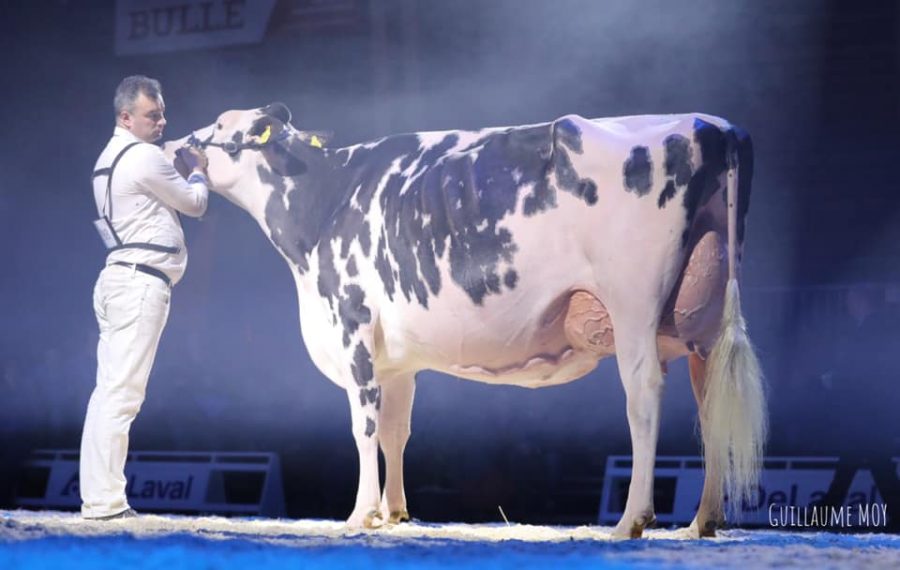
Grand Champion HOLSTEIN Expo Bulle 2019: Au Parchy Doorman Jolie
The other cow to recently come into contention was a month fresh in March when she beat Dempsey Esprit in a tight race for Grand Champion Holstein at Switzerland’s National Show, the Expo Bulle in Espace Gruyère, Bulle. Dempsey Esprit won Best Udder of the show. Au Parchy Doorman Jolie has been quietly coming for two years – she won her class at the 2017 and 2018 Swiss Expo. She is owned by Gobeli Holstein, Gasser Ruedi & Räz Hansjörg. She has been included in the Swiss team, along with four of her Gobeli herdmates.
With quarantine testing and internal selection processes still to navigate, most other countries were reluctant to talk up any cows at the time of writing this article.
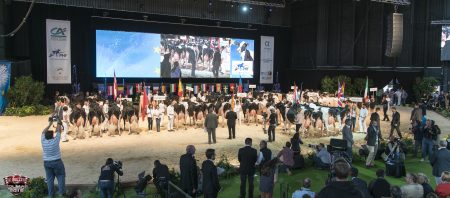
This year’s competition includes teams from Austria, Belgium, Czech Republic (known as Czechia to its inhabitants), Denmark, Finland, France, Germany, Ireland, Italy, Latvia, Luxembourg, The Netherlands, Poland, Portugal, Spain, Slovenia, Sweden, Switzerland and the UK.
Spain, Germany and Italy preparing
Spanish team head fitter and leader, Agapito Fernandez, said he is proud to represent his country.
Spain is bringing 14 animals, leaving from Cantabria, in northern Spain, where they completed their quarantine requirements. Their trip will take 24 hours. The Spanish Holstein Association is helping support them.
Germany has entered with eight Holsteins and four Red & White Holsteins, with the effort costing between €5000 to €6000 (A$7900-A$9500) per cow. Their quarantine spans 30 days and the Germans have based their effort from the farm of Claude Thein, in Luxembourg, according to one of the team selectors, Henrik Wille.
“We want to present the best cows from Germany, and we are proud to be a little part of this big show,” he said.
Italy’s head classifier and team organiser for the All-European Show, Corrado Zilocchi, said there are 15 Holsteins and five Red & White Holsteins coming from his country.
“Unfortunately we don’t have a national plan of IBR eradication, so we are in the Annex III of the EU regulation and we need to test all animals of the farm that include animals participating at the show,” he said.
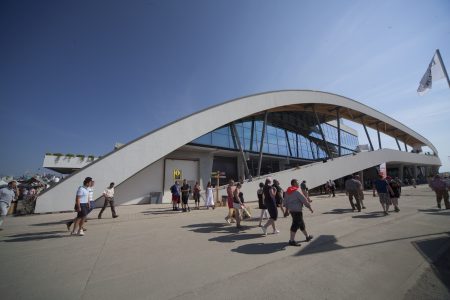
This year, the All-European Championship will be held in the small municipality of Libramont in Belgium. On April 12 and 13, some 200 cows from 19 countries will go head-to-head for individual and national team titles in the Holstein and Red & White Holstein shows under UK judge Mark Nutsford (Holsteins) and Swiss judge Markus Gerber (Red & White Holsteins).
Italy’s quarantine is 30 days and they have chosen a stable in Mantova. Their road-trip to Libramont will take 15 hours. The Italian team has no government support for the costs, and they were looking for sponsorship at the time of printing.
Corrado said the competition was the high point of the exercise.
“It is always an emotional experience,” he said.
In the 2016 team contest, France won followed (respectively) by Switzerland, Spain, Italy, Germany, Austria, the UK, Luxembourg, Belgium and the Czech Republic.
In 2019, the competition again promises to get the crowd’s adrenalin pumping. And there is no doubt that Libramont represents a culmination of work and planning in return for three years of bragging rights.
And, for that reason no-one has hesitated to put their hand up.
Competition break-down
HOLSTEIN
JUNIOR – One calf, in-milk, and aged up to 32 months
INTERMEDIATE – Two calves, in-milk, and aged up to a maximum of 60 months
SENIOR – Cows, in-milk with at least three calves
RED & WHITE HOLSTEIN
JUNIOR – One or two calves, in-milk, and aged up to maximum 60 months
SENIOR – Cows, in-milk with at least three calves
TEAMS COMPETITION
Each participating country chooses their best four cows after the completion of the individual show results. The inter-nation competition is adjudicated by judges from all countries involved, although they do not place their own country’s entry.
For more information, please visit “Holstein Libramont 2019” on Facebook or http://www.holsteinlibramont2019.com/en and be sure to watch right here on The Bullvine for full live coverage of the show.
Thank you to Sheila Sundborg (Canada), Brent Crothers (UK) and Alberto Medina (Spain) for their help in securing and translating answers.

